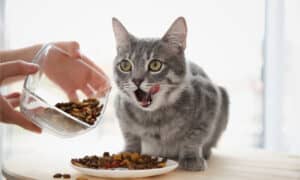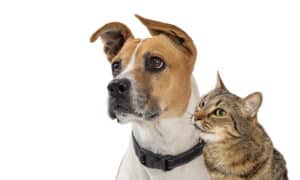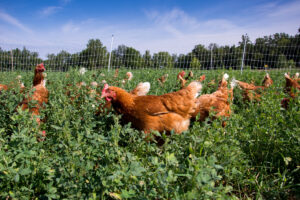| Best for | Product |
|---|---|
| Best Overall | National Geographic Readers: Frogs! |
| Best Board Book | Little Green Frog Chunky Lift-a-Flap Board Book (Babies Love) |
| Best Encyclopedia | Amphibian |
| Best Picture Book | I Don’t Want to Be a Frog |
| Best About Tadpoles | Explore My World Frogs |
| Best Illustrations | Fanatical About Frogs |
Frogs are fascinating creatures that capture the minds of children everywhere. It could be their long, sticky tongues that can catch flies in mid-air (ewwww!) or their hopping that is so fun to replicate. Either way, young frog fanatics will love to learn more about their ribbiting friends in a board book, picture book, or encyclopedia. For developing readers, a book that appeals to their love of frogs can get them enthusiastic about reading.
National Geographic Books make an appearance twice on our list as great options for prereaders and developing readers. Their National Geographic Readers series are geared toward a specific reading level and have plenty of scientific facts about favorite animal species, including frogs. If your child likes this style of book, we highly recommend looking into a set from the series made for their reading level.
Here are our favorite children’s books about frogs.
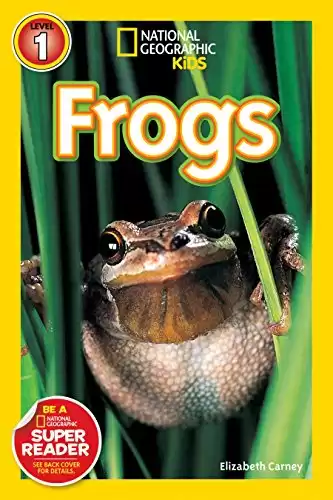 Check Amazon
Check Amazon- 32 pages.
- Customers recommend this book for children ages 4 through 7.
- Part of the series of National Geographic Readers Level 1 books.
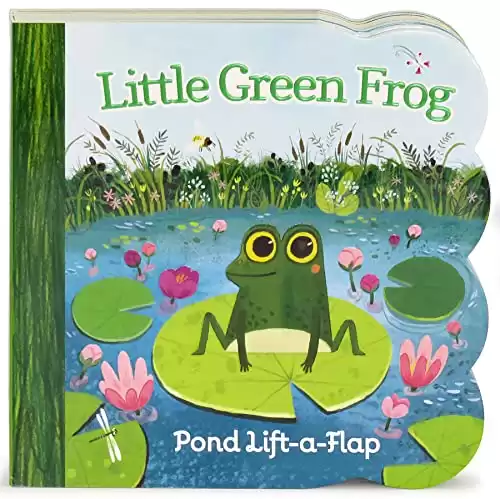 Check Amazon
Check Amazon- 5 pages.
- Customers recommend this book for children ages 1 and 2.
- Sized for small hands and fingers.
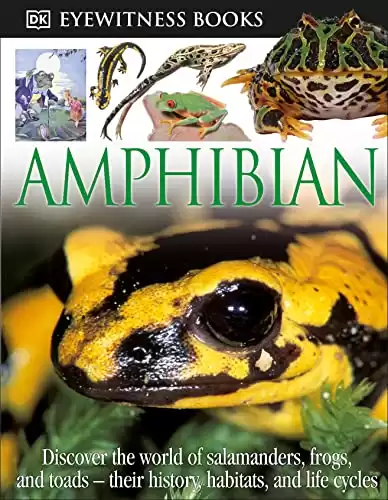 Check Amazon
Check Amazon- 72 pages.
- Recommended for children ages 8 through 12.
- Offers a close look at the nature of amphibians.
 Check Amazon
Check Amazon- 32 pages.
- Customers recommend this book for children ages 2 through 5.
- A story about being happy with who you are.
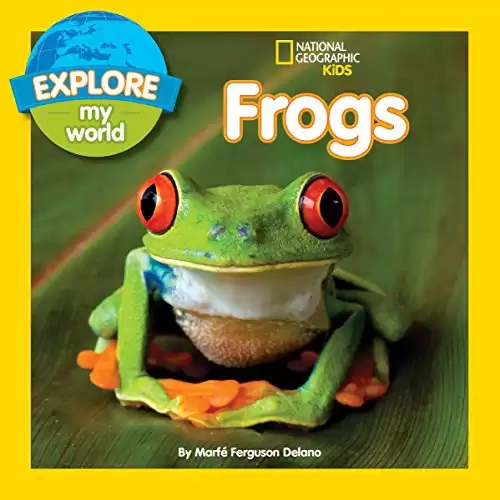 Check Amazon
Check Amazon- 32 pages.
- Recommended for children ages 3 through 7.
- Part of the Explore My World National Geographic book series.
 Check Amazon
Check Amazon- 40 pages.
- Customers recommend this book for children ages 3 through 6.
- Available in hardcover or paperback
- Explains concepts to young minds in a fun way
- Parents rate this frog book 4.9 out of five stars
#1 Best Overall: National Geographic Readers: Frogs! by Elizabeth Carney
National Geographic books are always great, with plenty of scientific facts and amazing photos and National Geographic Readers: Frogs! lives up to the stellar reputation. Author Elizabeth Carney has written multiple books for National Geographic and even won the 2005 AAAS Science Journalism Award for science reporting for children.
This is a good book for mixed ages. One reviewer noted that it had something for older and younger kids. “They talk about many things including the different colors of the frogs, the different sounds they make, the food they eat, and they talk about frog babies,” they said. “My six-year-old loves learning the facts and reading the books while my three-year-old loves the pictures.”
This is also a great classroom book. National Geographic has resources for teachers that use this book for fun activities and extended learning. They are also aligned to the Common Core standards so teachers know how they can add National Geographic Readers: Frogs! to their existing plans. This book is a Level 1 reader. National Geographic has 43 other titles at a variety of levels.
“The ‘pre-readers’ level books are extremely simple and great because she memorizes the words and can ‘read’ it herself,” said one reviewer who reads National Geographic books with her two-year-old. “We love the more advanced ones too because there is more information to talk about.”
Negative reviews included one from a teacher who said that the Kindle version of the book isn’t formatted correctly. Another reviewer said, “Includes a picture of a frog eating another frog, of all the things frogs eat, why include a prominent picture about that? Frightened my child. Pictures are generally dark. Text is ok.”
Pros and Cons of National Geographic Readers: Frogs! by Elizabeth Carney
| Pros | Cons |
|---|---|
| This book is written by Elizabeth Carney, winner of the 2005 AAAS Science Journalism Award for science reporting for children. | The Kindle version may not be formatted correctly. |
| It’s appropriate for children of various ages. | It includes a photo of a frog eating a frog, which may be disturbing to some children. |
| It makes a great classroom book and it’s aligned to the Common Core standards so teachers know how they can add this Level 1 reader to their existing lesson plans. |
- 32 pages.
- Customers recommend this book for children ages 4 through 7.
- Part of the series of National Geographic Readers Level 1 books.
2. Best Board Book: Little Green Frog Chunky Lift-a-Flap Board Book by Ginger Swift
This chunky board book, Little Green Frog Chunky Lift-a-Flap Board Book, follows the adventures of a lovably cute frog character as he hops around his home. Each page has flaps that your child can pull down or lift up to reveal another aspect of the scene. This is great for fine motor development as well as fun. The board book pages are also very sturdy so you don’t need to worry about them getting pulled off. In fact, this book was so sturdy that it made it through three of my own children’s interested, grabbing hands as babies and toddlers.
The book is best for babies and young toddlers. The publisher recommends it for ages six months and up. “Not only is this book ADORABLE, but the story is very nice and cute,” wrote one reviewer. “My one-year-old niece has an absurd amount of books, yet this continues to be her favorite.” There are other books in this series, including the Little Yellow Bee, Little Blue Boat, and Little Orange Truck. Individually or together, they make a great gift to start your little one’s library.
A few reviewers didn’t like the flap illustration style, with one saying, “I think this is the worst illustration for a baby book. It is way too busy and the actual animal finding under the flap is not depicted very well.”
Pros and Cons of Little Green Frog Chunky Lift-a-Flap Board Book by Ginger Swift
| Pros | Cons |
|---|---|
| This chunky board book has flaps on each page that reveal another aspect of the scene. | A few reviewers didn’t like the flap illustration style. |
| This improves fine motor development in addition to being fun. | |
| The pages are sturdy. | |
| The publisher recommends it for ages six months and up. |
- 5 pages.
- Customers recommend this book for children ages 1 and 2.
- Sized for small hands and fingers.
3. Best Encyclopedia: DK Eyewitness Books: Amphibian by Barry Clarke
Frogs are some of the stars of Amphibian by Barry Clarke. It features plenty of high-resolution photos that show the vast diversity of these types of animals. The pages are organized by species and type. So even if your child loves frogs, they can still learn about other amphibians, such as salamanders and newts, and how they are related. It also has a great section on the similarities and differences between frogs and toads.
“My daughter is a frog fanatic, bought this for her sixth birthday,” wrote one reviewer. “She read it cover to cover. She loved the vibrant pictures and was excited to learn about other amphibians.” This book is great to show how all of these animals fit into the larger animal kingdom.
There were no critical reviews for this book on Amazon.
Pros and Cons of Amphibian by Barry Clarke
| Pros | Cons |
|---|---|
| Frogs some of the stars of this book on amphibians. | None |
| The book features high-resolution photos and is organized by species and type. | |
| It includes a section on the similarities and differences between frogs and toads. |
- 72 pages.
- Recommended for children ages 8 through 12.
- Offers a close look at the nature of amphibians.
4. Best Picture Book: I Don’t Want to Be a Frog by Dev Petty
Your child may love frogs but the adorable main character in I Don’t Want to Be a Frog, well…doesn’t want to be a frog! He thinks that being a different animal would be more fun. His dad knows that he is perfect just the way that he is and through the story, the young frog learns it, too.
This picture book has great illustrations from illustrator Mike Boldt and a heartwarming tale written by Dev Petty. Other books featuring frog and his dad include I Don’t Want to Go to Sleep, There’s Nothing to Do, and I Don’t Want to Be Big. They all have the same illustration style and come with a message that encourages young readers to accept and love themselves.
Amazon lists this book as a top Teacher’s Pick. Reviewers noted that it was a great choice for a classroom read-aloud. “Such a cute and funny book for young ones,” wrote one teacher. “So fun to read aloud as well. Big pictures are easy to see during reading to groups. I’d recommend it to anyone.”
While reviews for this book were 96% positive, one reader said that there was “No reason for a four year old to know that animals eat other animals.”
Pros and Cons of I Don’t Want to Be a Frog by Dev Petty
| Pros | Cons |
|---|---|
| This book teaches children that they’re perfect the way they are through the story of a young frog who doesn’t want to be a frog. | A few readers were disturbed by some of the realism reflected in this book. |
| Amazon lists this book as a top Teacher’s Pick. |
- 32 pages.
- Customers recommend this book for children ages 2 through 5.
- A story about being happy with who you are.
5. Best About Tadpoles: Explore My World: Frogs by Marfe Delano
Another National Geographic Kids pick, Explore My World, Frogs has wonderful photos and graphics that show the lifecycle of a frog from tadpole to hopping, ribbiting frog. This book is geared toward younger readers who have an adult helping them. It introduces scientific facts about frogs and what your child may see in their own backyard. The section on baby frogs will appeal to any baby-obsessed kids, like my daughter.
The Explore My World series is a favorite in my house because they appeal to siblings. My six-year-old works to sound out and read sight words while my younger children love the vibrant pictures. The books are designed for ages three to seven. “The engaging Explore My World picture books invite kids to take their first big steps toward understanding the world around them and are just the thing for parents and kids to curl up with and read aloud,” says National Geographic.
They can move up to the National Geographic Readers: Tadpole to Frog as they learn and grow. It is similar to our top overall pick as a Level 1 reader but focuses on the specifics of frog development. All National Geographic Kids books can be relied upon to deliver the best photos along with fun scientific facts.
There were no negative reviews for this book.
Pros and Cons of Explore My World: Frogs by Marfe Delano
| Pros | Cons |
|---|---|
| This National Geographic Kids book features photos and graphics that illustrate the lifecycle of a frog from tadpole to adult. | None |
| It includes scientific facts about frogs and a section about baby frogs. | |
| The Explore My World series is designed for children ages three to seven. |
- 32 pages.
- Recommended for children ages 3 through 7.
- Part of the Explore My World National Geographic book series.
6. Best Illustrations: Fanatical About Frogs by Owen Davey
The illustrations in this picture book, Fanatical About Frogs, are more modern art than children’s book illustrations, which can appeal to adult readers who may be getting a little tired of seeing the same adorable frogs in every book. It is structured like an encyclopedia, with each two-page spread highlighting a different aspect of frogs’ development and habits.
If you like illustrator Owen Davey’s style, check out some of his other titles. These include other animal-focused books, such as Curious About Crocodiles, Obsessive About Octopuses, and Smart About Sharks. He has also lent his artistic talents to collaborative projects and books with King Charles III of England, Christopher Lloyd, and others.
“I bought this initially for my four-year-old son but bought copies for all of my frog-loving nephews after receiving our first one,” wrote one reviewer. “It’s beautiful and full of fun facts that kids love. This book does a great job of appealing to a wide age range. We’ll be buying every book in this series!”
A sole reader was disturbed that this book was printed in China.
Pros and Cons of Fanatical About Frogs by Owen Davey
| Pros | Cons |
|---|---|
| This illustration in this book is more like modern art than children’s book illustrations. | The book was printed in China. |
| The book is structured like an encyclopedia, with each two-page spread highlighting a different aspect of frogs’ development and habits. |
- 40 pages.
- Customers recommend this book for children ages 3 through 6.
- Available in hardcover or paperback
- Explains concepts to young minds in a fun way
- Parents rate this frog book 4.9 out of five stars
How to Choose the Best Children’s Book about Frogs
Finding the right book for your child depends on their reading level, interests, and the type of book that they typically enjoy. We’ll look at each of these in more detail to help you determine which one is the right frog book for you.
Reading Level
Younger children love picture books and board books. Even if they aren’t reading yet, kids can benefit from following along with the words and pictures as you read to them. If your child is just learning to read, look for a book that has plenty of sight words and illustrations that go with the story. For older readers, chapter books are a great way to challenge them while letting them learn all about their fun, hopping friends. Encyclopedias can be for all ages, with pictures, illustrations, diagrams, and fun facts.
Interests
Does your child love the science of frogs? Or are they more interested in hopping like a frog? Either way, there is a children’s book about frogs that appeals to their interests. Many do incorporate science through fun facts and diagrams about frogs, tadpoles, and other animals that live near them. Many also have ways that we can protect frogs and their habitat, offering eco-friendly activities and tips that are great for all readers.
Type of Book
Think about the kind of books that your child already enjoys. Do they have a lot of pictures? Are they large or small? Do they include fun facts and multi-page spreads? Look for a book about frogs that is similar. Not only will this help them get enthusiastic about their new book, but it can also provide familiarity.
The 3 Different Types of Children’s Books About Frogs
- Board Books — These are thicker and made of durable cardboard that can hold up to young baby and toddler hands pulling at them. They also have simple illustrations that appeal to a younger audience. Some also have interactive features, such as pop-up or pull-out tabs. They tend to be shorter than picture books made for shorter attention spans.
- Picture Books — As their name suggests, picture books have plenty of pictures to go along with the story. Some feature illustrated characters that go through the story. Depending on the style, the illustrations can be very realistic or cartoonish. The backgrounds are a great way to see an artistic representation of frogs’ habitat, as well as the plants and animals that live near them.
- Encyclopedias — These books include facts, photos, and diagrams that show the science of frog study. Some are organized by species and have a spread on frogs, toads, and other animals. Others go into more detail about a frog’s lifecycle, eating habits, and behavior. Many encyclopedias touch on both so that readers can learn. Encyclopedias for kids often have boxes for text, fun facts sprinkled throughout, and plenty of photos and illustrations that connect to science.
| Best for | Product |
|---|---|
| Best Overall | National Geographic Readers: Frogs! |
| Best Board Book | Little Green Frog Chunky Lift-a-Flap Board Book (Babies Love) |
| Best Encyclopedia | Amphibian |
| Best Picture Book | I Don’t Want to Be a Frog |
| Best About Tadpoles | Explore My World Frogs |
| Best Illustrations | Fanatical About Frogs |
Thank you for reading! Have some feedback for us? Contact the AZ Animals editorial team.

